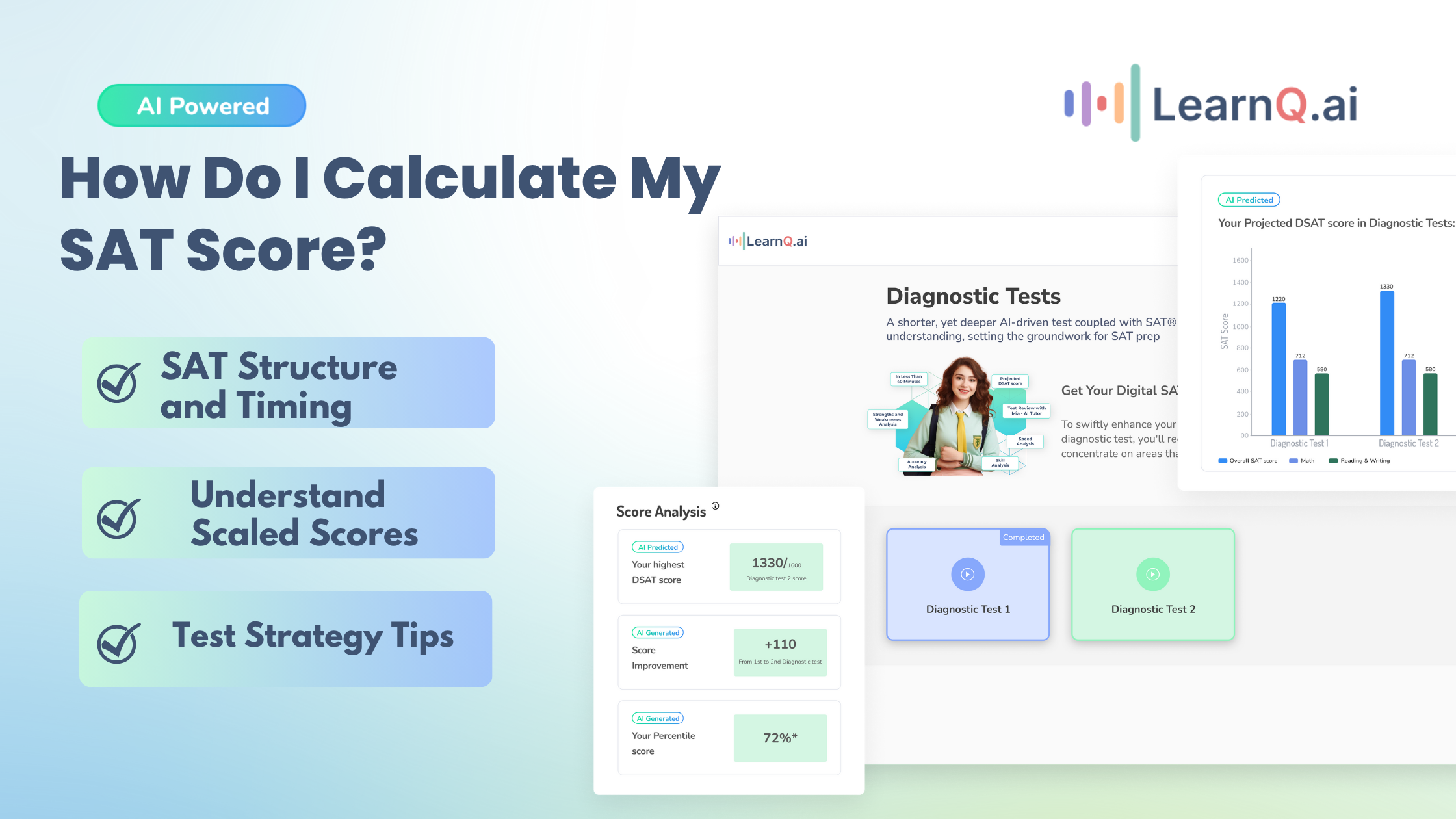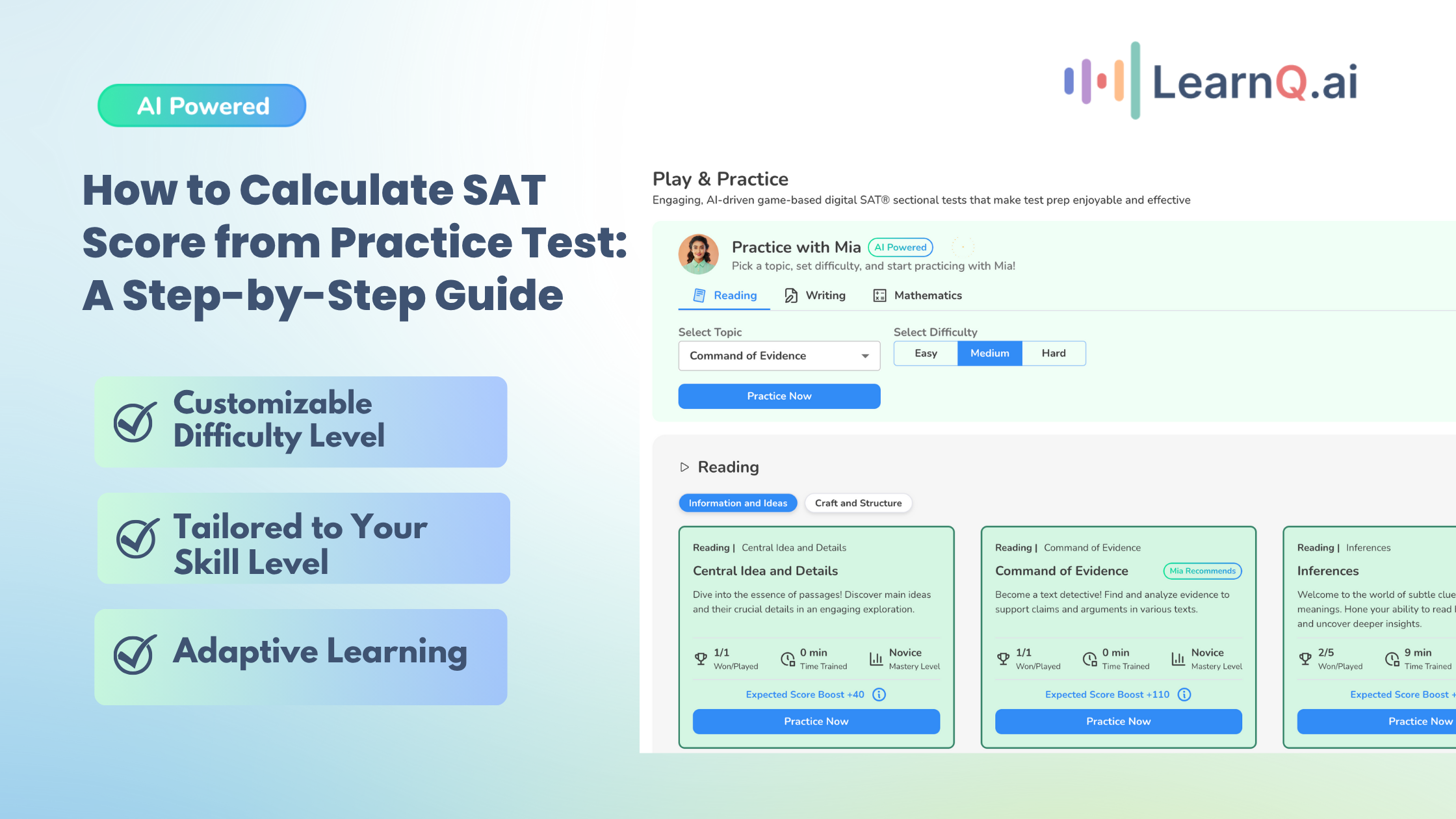If you’re preparing for the digital SAT, understanding how your score is calculated is crucial. The SAT scoring process may seem mysterious at first glance—but it’s not magic. It’s math. With adaptive testing, raw scores, and scaled scoring systems, there’s a lot going on behind the scenes.
In this guide, we break down everything you need to know about how the SAT score is calculated, so you can take control of your prep and set your score goals with confidence.
SAT Structure: Two Sections, Four Modules
The digital SAT is divided into two sections:
- Reading and Writing (RW) – 2 modules, 54 questions total
- Math – 2 modules, 44 questions total
Each module is timed separately:
- 32 minutes per module for Reading and Writing
- 35 minutes per module for Math
Each section uses adaptive testing. That means your performance in the first module determines the difficulty level of your second module. So if you do well in Module 1, Module 2 will contain harder (and higher-value) questions.
Step 1: Raw Scores
Your raw score is simply the number of questions you answer correctly. There is no penalty for incorrect answers, so it’s always worth guessing if you’re unsure.
For example:
- 45 correct answers in Reading and Writing = raw score of 45
- 38 correct answers in Math = raw score of 38
Step 2: Adaptive Test Design & Difficulty Weighting
Here’s where it gets more complex.
Each module contains a mix of easy, medium, and hard questions. But not all questions are created equal:
- Harder questions are worth more toward your final score.
- Easier questions contribute less, even if answered correctly.
- Your Module 2 difficulty (easy or hard) limits the maximum score you can achieve in that section.
This adaptive model ensures that two students with the same number of correct answers could still receive different scaled scores depending on the difficulty levels of the questions they got right.
Step 3: Convert to Scaled Scores
Your raw score is then converted to a scaled score between 200 and 800 per section. The exact conversion depends on the test version and is based on College Board’s internal algorithm.
The total SAT score is the sum of the two scaled section scores:
\text{Total Score} = \text{Math (200–800)} + \text{Reading & Writing (200–800)} = \text{400–1600}📌 Tip: You can estimate your scaled score using SAT practice tests in the Bluebook app, which mirrors official College Board scoring as closely as possible.
Example Scenario
Let’s say a student answers:
- 48 RW questions correctly → Raw Score = 48
- 40 Math questions correctly → Raw Score = 40
Depending on the difficulty levels and test curve:
- Reading and Writing might convert to a 740
- Math might convert to a 770
Estimated Total SAT Score = 740 + 770 = 1510
Pretest Questions and Guessing Strategy
Each module includes two pretest questions. These don’t count toward your score but are used by College Board to trial future content. Since you won’t know which questions are pretest, it’s best to give every question your best shot.
And yes—always guess. No points are deducted for wrong answers, and leaving a question blank is a missed opportunity.
What’s a “Good” SAT Score?
- 1200+: Above average
- 1400+: Competitive for top-50 colleges
- 1500+: Competitive for Ivy League and top-20 universities
- 1600: Perfect score
Your SAT score isn’t the only factor in college admissions, but it can strengthen your application significantly—especially for merit scholarships.
Key Takeaways
- The SAT is scored out of 1600, with two section scores between 200 and 800
- Raw scores count correct answers only—no penalty for guessing
- The digital SAT uses adaptive testing to tailor difficulty based on performance
- Harder questions = higher weight in the scoring algorithm
- The final score is a scaled score, adjusted for test difficulty and performance patterns
Final Thoughts
So, how is the SAT score calculated? Through a mix of raw scores, question difficulty, adaptive testing, and statistical scaling. While the College Board doesn’t reveal the exact scoring formula, understanding the system can help you build a smart test strategy.
The best way to prepare is through official SAT practice tests, understanding how each question type is weighted, and focusing on accuracy from the very first module.











